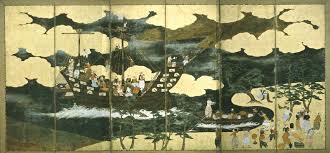The Early Middle Ages are often referred to as the Dark Ages because it was the time before Enlightenment in Europe. In reality, Asia and other parts of the world were busy experiencing their own Enlightenment.
During the Middle Ages, the Abbasids took over the Islamic Empire and changed the capital to Baghdad. The Abbasids fostered an unprecedented attitude that had an openness to foreigners and their ideas.
This was the golden age in Islamic learning. Arabic replaced Greek in commerce, religion, politics and culture in much of Asia. Baghdad quickly became the world centre of scholarship. Muslim scholars were translating the works of Greek philosophers and Hindu manuscripts. In 1025, Ibn Sina compiled the Cannon of Medicine which became the standard medical textbook for centuries. Muslim Asians began adopting math concepts from India, such as zero.
Science and religion were becoming peacefully intertwined. Ibn Rushd, a Muslim theologian argued that the only path to religious enlightenment was through Aristotelian reasoning. Muslim mathematicians and astronomers developed algebra partly to simplify Islamic Inheritance Law. To show how important some of these breakthroughs were, one must only remember that today we call the base 10 number system the ‘arabic numerals.’¹
The Abbasids mainly dominated west of the Talas River, while China dominated the east.
At the beginning of the Middle Ages, China was under the Tang Dynasty who was in the process of making China’s government more meritocratic. China ruled 80 000 000 000 people across 4 000 000 000 square miles and made incredible art that was traded throughout all of Asia. This includes the high quality porcelain that we now call china¹. Much of this art was portraying people who were not Chinese which is very indicative of the inclusiveness and openness of the empire.
China transitioned into the Song Dynasty and by the 11th century Chinese metalworkers were producing as much iron as Europe would be able to produce in the 18th century¹. Agriculture was booming and paper money began being produced. Most importantly, the Chinese started producing gunpowder which has contributed immeasurably to modern warfare¹.
1. The Dark Ages...How Dark Were They, Really?: Crash Course World History #14. Retrieved from http://www.youtube.com/watch?v=QV7CanyzhZg
© BrainMass Inc. brainmass.com June 30, 2024, 9:25 am ad1c9bdddf